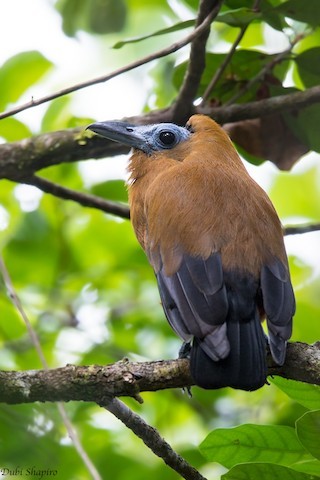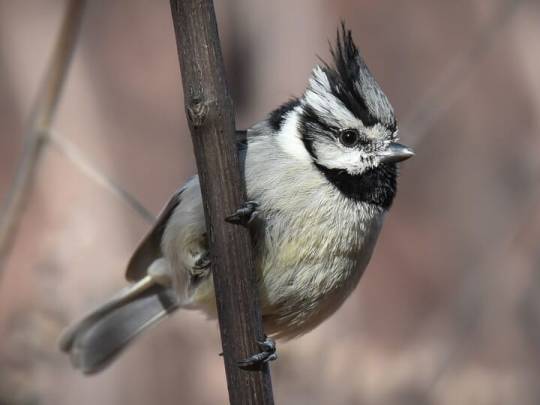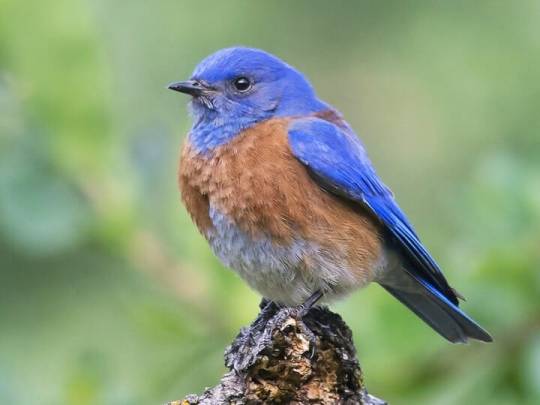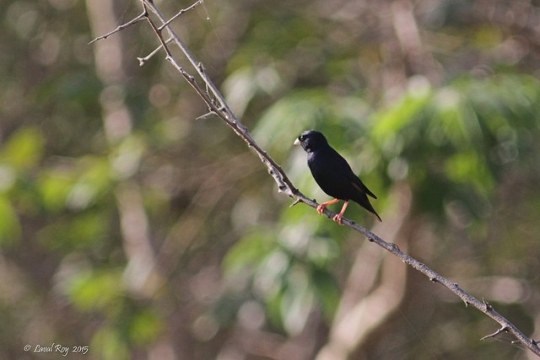#viduidae
Text

Pin-tailed Whydah (Vidua macroura), male, family Viduidae, order Passeriformes, found in most of Sub-Saharan Africa
photograph by Keith Hutton
618 notes
·
View notes
Text

[1680/10977] Broad-tailed paradise whydah - Vidua obtusa
Order: Passeriformes
Suborder: Passeri
Superfamily: Passeroidea
Family: Viduidae (indigobirds and whydahs)
Photo credit: Charlotte Morris via Macaulay Library
561 notes
·
View notes
Text

Pin-tailed Whydah
71 notes
·
View notes
Text
Loser's Bracket: Round 2, Poll 1




Sources: Capuchinbird (Dubi Shapiro), Titmouse (All About Birds), Bluebird (All About Birds), Whydah (Naun Amable Silva)
#hipster bird losers bracket#capuchinbird#bridled titmouse#western bluebird#shaft tailed whydah#passeriformes#cotingidae#paridae#turdidae#viduidae#bird polls#animal polls
15 notes
·
View notes
Text
tbh I'm actively offended on behalf of obligate brood parasites for the nasty way science communicators talk about them behind their backs. it is both absolutely wild and objectively fucking cool that multiple groups of birds* have independently thrown parental care out the evolutionary window and achieved wild success by doing so. brood parasites with a high diversity of host species (as opposed to those tied to a single host species) may be able to essentially extinction-proof themselves by spreading out the risk of nest failure; very literally not putting all their eggs in one basket. the mutualistic relationship between honeyguides and the genus Homo could easily go back over a million years. the plumage of the common cuckoo is mimicry resembling the Eurasian sparrowhawk; Pliny the Elder believed that cuckoos turned into hawks in the winter. different lineages of a single cuckoo species often lay eggs in different colors and patterns, mimicking the eggs of their most preferred host species and giving us a window into the process of speciation. black-headed ducklings are completely independent within hours of hatching, leaving the nest without harming any of the ducklings from their host nest. don't talk shit about my favorite little guys.
*the old-world cuckoo genera Cuculus and Clamator, the monophyletic clade formed by the new-world cuckoo species of Tapera and Dromococcyx, the new-world passerine genus Molothrus and the old-world passerine family Viduidae, the old-world piciform family Indicatoridae, as well as Heteronetta atricapilla apparently alone out of all the anatids in the entire world
27 notes
·
View notes
Photo

Eastern Paradise-Whydah (Vidua paradisaea)
© William Stephens
40 notes
·
View notes
Photo

Vidua wilsoni by Laval Roy
Known as Wilson's indigobird.
Polish name: wdówka ogrodowa (wróblowe, wdówki)
51 notes
·
View notes
Photo

انثى ويدا طويل الذيل عصفور الجنه طويل الذيل long-tailed paradise whydah or eastern paradise whydah (Vidua paradisaea) فصيله يرجع ارتباطها قديماً بعائلة النساج ولكن تم انفصالها حديثاً الي فصيله منفصله خاصه بطيور الجنه او الويدا وهي من طيور العالم القديم التي تعيش وتتوزع بالمناطق الاستوائية من افريقيا وامريكا اللاتينية وينتقل منها الكثير من خلال مربي الطيور الي اوروبا واسيا حتى ثبت وجودها وتفريخها ببعض الاماكن خارج موائلها الطبيعيه . يكون الوان الذكر بين الابيضوالاسود والطوق الذهبي واللون البرتقالي بالصدر ويطول ربشات الذيل الي ١٥ سم قبل موسم التزاوج وتصل الي ٤٥ سم في موسم التزاوج ثم يغير الريشات بالذيل فترة الصيف والخريف وتنموا بالشتاء والانثى تميل الوانه للابيض والاسود والذهبي الاشهب وليس لها ريشان الذيل ويتغذى على الحبوب والحشرات الصغيره ويصنع الاعشاش بالنسج بين الاغصان المرتفعه وفي مجموعات ومستعمرات . ============== @boyahia ============== The long-tailed paradise whydah or eastern paradise whydah (Vidua paradisaea) is from the family Viduidae of the order Passeriformes. They are small passerines with short, stubby bills found across Sub-Saharan Africa. They are mostly granivorous and feed on seeds that have ripen and fall on the ground. The ability to identify between males and females is quite difficult unless it is breeding season. During this time, the males molt into breeding plumage where they have one distinctive feature which is their long tail. It can grow up to three times longer than its own body or even more. Usually, the whydahs look like ordinary sparrows with short tails during the non-breeding season. In addition, hybridization can occur with these paradise whydahs. Males are able to mimic songs where females can use that to discover their mate. However, there are some cases where females don't use songs to choose their mate but they use either male characteristics like plumages or they can have a shortage of options with song mimicry. Paradise whydahs are brood parasites. They won't destroy the eggs that are originally there but will lay their own eggs in other songbirds nest. Overall, these whydahs are considered least concerned based on the IUCN Red List of threatened species. (at الكويت محافظة الجهراء) https://www.instagram.com/p/CJT3CCLA1Kn/?igshid=p0rriedszipj
0 notes
Link
Chapters: 1/1
Fandom: Thor (2011)
Rating: General Audiences
Warnings: No Archive Warnings Apply
Relationships: Frigga/Odin
Characters: Odin (Marvel), Frigga (Marvel), Loki (Marvel), Thor (Marvel)
Additional Tags: Family, Mother-Son Relationship, Childhood, Kid Fic
Summary:
When her husband presents the babe to her, Frigga's first thought is He doesn't look like a Frost Giant.
0 notes
Video
. . . قال ابن قيم الجوزية رحمه الله . 🍁🌺 ﺍﻹﺧﻼﺹ ﺃﻥ ﻻ ﺗﻄﻠﺐ ﻋﻠﻰ ﻋﻤﻠﻚ ﺷﺎﻫﺪاً ﻏﻴﺮ الله ﻭﻻ ﻣﺠﺎﺯﻳﺎً ﺳﻮﺍﻩ🌺🍁 . 🌺🌹المصدر / ﻣﺪﺍﺭﺝ ﺍﻟﺴﺎﻟﻜﻴﻦ 29/2 🌺🌹 . . . . . 🔴💥طائر هويد دبوس الذيل - Pin-tailed whydah💥🔴 . . التصنيف العلمي المملكة : الحيوانية الأسرة في اللغات : الفقاريات الدرجة : إيفس الترتيب : Passeriformes الأسرة : Viduidae جنس : Vidua الأنواع : V. macroura الاسم العلمي : Vidua macroura . . تواجدها في أفريقيا جنوب الصحراء الكبرى وفي جنوب كاليفورنيا وهو طائر طفيلي حيث تضع بيضها في أعشاش الطيور الاخرى وتضع الاناث من 2 الى 4 بيضات في اعشاش متفرقة وهي طيور لا تعيش كازواج وتتواجد معا لتزاوج فقط و الذكور متعدد الزوجات من هذا النوع وتتغذى على البذور والحبوب . . Its presence in sub-Saharan Africa in Southern California Africa, a bird parasite which lay their eggs in the nests of other birds and put females from 2 to 4 eggs in nests scattered which birds do not live as spouses and exist together for mating only and male polygamist of this type and feed on seeds, grains . . displaying - عرض التزاوج . . . لا اله الا الله محمد رسول الله صلى الله عليه وسلم There is no god but Allah and Muhammad is the messenger of God . . . قال سهل بن عبدالله التستري . 🍁🌺"عمال البر يعملها البر والفاجر، وأما المعاصي فلا يتركها إلا صدِّيق🌺🍁 . . 🌺🌹المصدر / الحلية لأبي نعيم (10/ 211)🌺🌹 . . . . قران - Quran . . . @bosaif_aldhaheri @bosaif_aldhaheri @bosaif_aldhaheri . . (((أَشْهَدُ أَنْ لاَ إِلَهَ إِلاَّ اللَّهُ.أَشْهَدُ أَنَّ مُحَمَّدًا رَسُولُ))) (((I bear witness that there is no God but Allah and that Muhammad is His servant/slave and His messenger))) . . https://www.instagram.com/p/B8wC3ztgFRy/?igshid=11sgfa22z56up
0 notes
Text
PASSERIFORMES
Infraorden Passerida
(Clasificados por orden alfabético incluyendo la lista de control de Sibley-Monroe).
Aegithalidae: mitos.
Acanthisittidae.
Alaudidae: alondras, terreras, calandrias, cogujadas y afines).
Bombycillidae: Ampelis.
Callaeidae.
Cardinalidae: cardenales.
Certhiidae: agateadores.
Chloropseidae: loras.
Cinclidae: mirlos.
Cinclosomatidae: zordalas.
Cisticolidae: cistÃcolas.
Climacteridae: subepalos.
Coerebidae. (Incertis sedis)
Conopophagidae.
Cotingidae. (Género Phibalura, Anambe cola de tijera).
Dicaeidae: picaflores.
Drepanididae: mieleros hawaianos.
Emberizidae: trigueros y escribanos.
Estrildidae: pinzones.
Eurylaimidae.
Fringillidae: pinzones y afines.
Formicariidae.
Furnariidae.
Hirundinidae: golondrinas y aviones.
Hypocoliidae: hipocolio.
Icteridae: tordos americanos.
Irenidae: ioras.
Laniidae.
Leiothrichidae.
Maluridae.
Melanocharitidae.
Meliphagidae.
Menuridae.
Mimidae: sinsontes y calandrias americanas.
Motacillidae: bisbitas y lavanderas.
Muscicapidae: (A.O. U.), papamoscas.
Nectariniidae: nectarinas, pájaros sol.
Orthonychidae: corretroncos.
Paradoxornithidae: bigotudos.
Pardalotidae: pardalotes.
Paramythiidae.
Paridae: carboneros y herrerillos.
Parulidae: reinitas.
Passeridae: gorriones y afines.
Passerellidae: (Clado separado de los EmberÃzidos)
Petroicidae: petirrojos australianos.
Peucedramidae: ocotero.
Phylloscopidae.
Philepittidae.
Picathartidae: pavos calvos.
Pittidae.
Ploceidae.
Polioptilidae: tacuaritas, mirlos de agua.
Pomatostomidae: gárrulos.
Picapartidae.
Prunellidae: acentores.
Ptilogonatidae: capulineros.
Ptilonorhynchidae: pájaros emparrados.
Pycnonotidae: ruiseñores.
Regulidae: reyezuelos.
Remizidae: pájaros moscones.
Rhinocryptidae.
Sittidae: trepadores.
Sturnidae: estorninos.
Sylviidae: currucas y afines.
Thraupidae: fruteros y tángaras.
Timaliidae: charlatanes.
Troglodytidae: chochines.
Turdidae: tordos
Turnagridae: piopios.
Viduidae: viuditas.
Vireonidae.
Zosteropidae: ojiblancos.
0 notes
Text

Pin-tailed Whydah (Vidua macroura), male, family Viduidae, found in most of Sub-Saharan Africa
photograph by Annemarie Davis
540 notes
·
View notes
Text

[2868/11080] Cuckoo-finch - Anomalospiza imberbis
Also known as: parasitic weaver
Order: Passeriformes
Suborder: Passeri
Superfamily: Passeroidea
Family: Viduidae (indigobirds and whydahs)
Photo credit: Jo Morrison via Macaulay Library
#birds#Cuckoo-finch#Passeriformes#Passeri#Passeroidea#Viduidae#Anomalospiza#birds a to z#parasitic weaver#undescribed#25% - 50%
72 notes
·
View notes
Text

Long-tailed Paradise Whydah (Vidua paradisaea), male, family Viduidae, southern Africa
photograph by Dajan Chiou
570 notes
·
View notes
Text

Pin-tailed Whydah (Vidua macroura), male displaying to female, family Viduidae, Ngorongoro Conservation Area, Tanzania
photograph by Barbara Fleming
247 notes
·
View notes
Text

Long-tailed Paradise Whydah (Vidua paradisaea), male, family Viduidae, Kruger NP, South Africa
photograph by Bernard DUPONT
172 notes
·
View notes